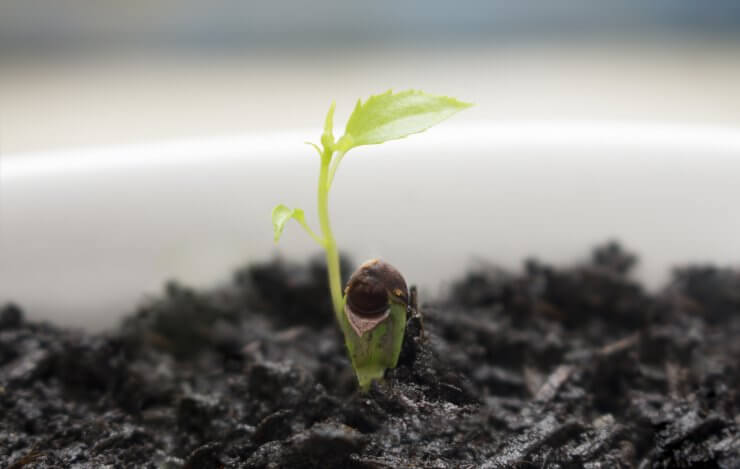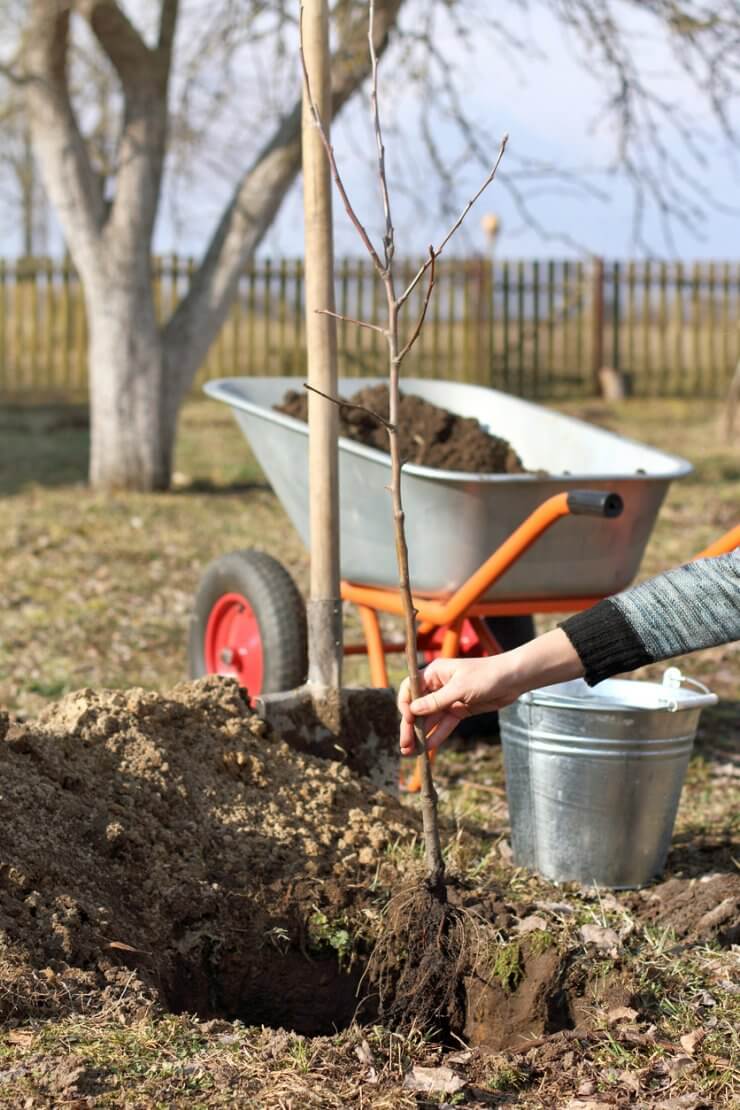
Young Apple tree seedling
Can you grow apples from seed? Yes. Should you? Probably not. Apple trees grown from seed will not be the same as the tree from which the source apple came; they do not grow true to type. On top of that, it will take years before the tree is mature enough to produce fruit—and even then, what you get will be a surprise.
If you already have an apple tree and you’d like to reinvigorate it by growing another type of apple, you can graft a scion from another tree onto a branch of your existing tree. It’s not a particularly difficult process, but it does require some patience.
Your quickest route to fresh apples is to buy a sapling. Planting a young tree that’s already begun its journey to maturity gives you (and the tree) the best chance at having apples to harvest. Depending on the age of the sapling, you may still need to exercise patience for a year or two, but eventually you’ll be able to pick predictable apples.
Seed Planting Process
So, if you take the Johnny Appleseed approach to growing apples, you’ll want to settle in for the long haul. It will be seven to 10 years before your tree produces fruit. And the fruit it produces will likely bear no resemblance to the apple from which it came. It’s possible to grow an apple tree this way, but it’s not the best way to grow one if you want to grow a specific type of apple—and if you want to be able to harvest apples in a reasonable amount of time.
If you’re really determined to try growing apples from seeds, plant them outdoors in the fall, when it’s cool and moist.
Grafting
Grafting is joining two plant parts together: the scion (twig or cutting) and rootstock (lower portion). The rootstock becomes the root system of the tree and controls the tree’s final size. The scion determines what type of tree it will be.
Now, you can order rootstock and start pretty much from scratch by joining it with the scion of a dormant apple tree. This could be a twig that you’ve taken from the previous year’s growth of a tree you already have.
If you have a healthy apple tree already and you’d like to try out a new cultivar without planting a whole new tree, you can graft a new scion onto your existing tree. This approach will give you quicker results, since the rootstock is actually a mature tree instead of a sapling.
There are several methods to grafting apple trees, including whip and tongue grafting and rind grafting. You don’t have to be a master gardener to graft, but you do need to be methodical and patient. It’s worth consulting your local extension center or nursery for advice on the method that will work best for your circumstances.
Growing Saplings

Apple tree sapling being planted in the soil
The quickest route to a fresh apple from your own tree is to plant and nurture a sapling. Someone has already taken care of the grafting for you, and tended the young tree to a manageable size.
One of the advantages of growing saplings is that you’ll get apples sooner. You also have a wide choice of rootstocks from which to choose; those will determine the size of your tree. So, you can get a sapling grown on dwarf rootstock to save space and still get full-size apples come harvest time.
Keep in mind that almost all apple trees need a pollination buddy—an apple tree that blossoms at the same time. Most apple trees are not self-fertile, so they need that cross-pollination in order to produce apples. If you only have one apple tree and no pollination buddy, you’ll get lovely apple blossoms in the spring, and that’s it.
The good news is that the humble crabapple can make a fine pollination buddy, provided it blossoms at the same time as the cultivar you’ve chosen. Be sure to check pollination times when you’re choosing your apple trees.
There is one other pollination hack you can use if, for some reason, you can’t grow a second tree or there’s no crabapple tree nearby (or it doesn’t flower at the same time). You can take flowering branches from another variety of apple tree, put the branches into a bucket of water, and hang the bucket from your tree. The bees won’t notice that they’re harvesting pollen from cut branches. Of course, you’ll have to find a suitable source for such branches. All in all, it’s probably easier to just plant a second compatible tree.
Have you tried growing apples from seeds, grafting, or saplings? Which approach do you prefer—and why? Please share your experiences with us.


 Previous
Previous


If I have a wonderful apple tree, can I get cuttings from it that will grow roots and create another tree? I know all new apple varieties come from one original tree, but do they have to use root stock from another tree too, or can the branches somehow be convinced to grow roots, similar to willow trees?